Hungarian Cabbage and Noodles with caramelized cabbage and onions is the ultimate comfort food. Cabbage and onions are slowly caramelized in butter until they become a mellow and fragrant, golden brown and then tossed into homemade egg noodles. So simple, but so sublime!
Don't underestimate the humble cabbage, especially in the hands of a Hungarian. They have a way of taking the modest cabbage and turning it into something glorious. Slowly sautéed in butter, it becomes rich, fragrant, mild, and utterly delicious.
Hungarian Cabbage Noodles - Haluski or Káposztás Tészta (pronounced ka'-pos-tash tes'-ta) are most lovingly known in our family as Kapoosta Choosta. My grandfather's parents were Hungarian immigrants, and my grandmother learned how to make noodles and other Hungarian dishes. I don't know if anyone else calls it Kapoosta Choosta or if it was just my grandmother's Americanized way of saying it. Either way, when Hungarian Cabbage Noodles are on the table for dinner, everyone's happy!
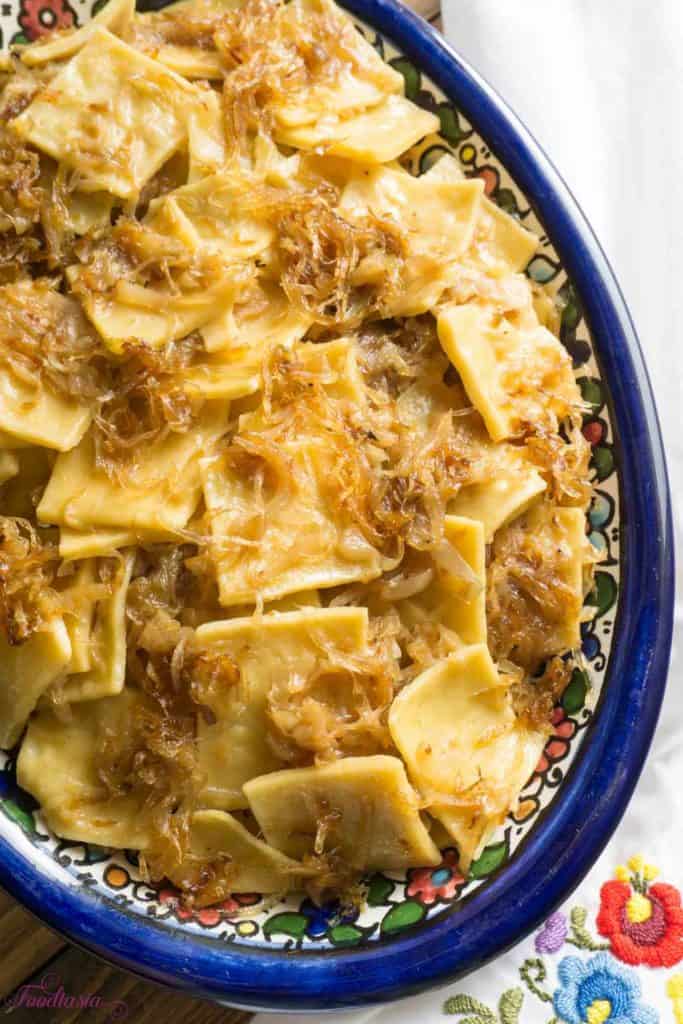
Jump to Section
What is Haluski
Haluski is a famous Hungarian cabbage and noodle dish, also called Kaposztas Kocka, halushki, or haluska. It's very popular in Poland, Slovakia, the Czech Republic, Ukraine, and most of Eastern Europe. There are many variations from family to family with various names as well.
Some cooks use only cabbage, while some use cabbage and onion. Many cooks use only one onion, but I love the rich flavor that extra caramelized onions bring to the dish, so I increase mine to one to two pounds of onions for three pounds of cabbage.
Some cooks grate the cabbage then salt it to release excess juices before cooking. I prefer thinly slicing mine and caramelizing them in butter without salting them.
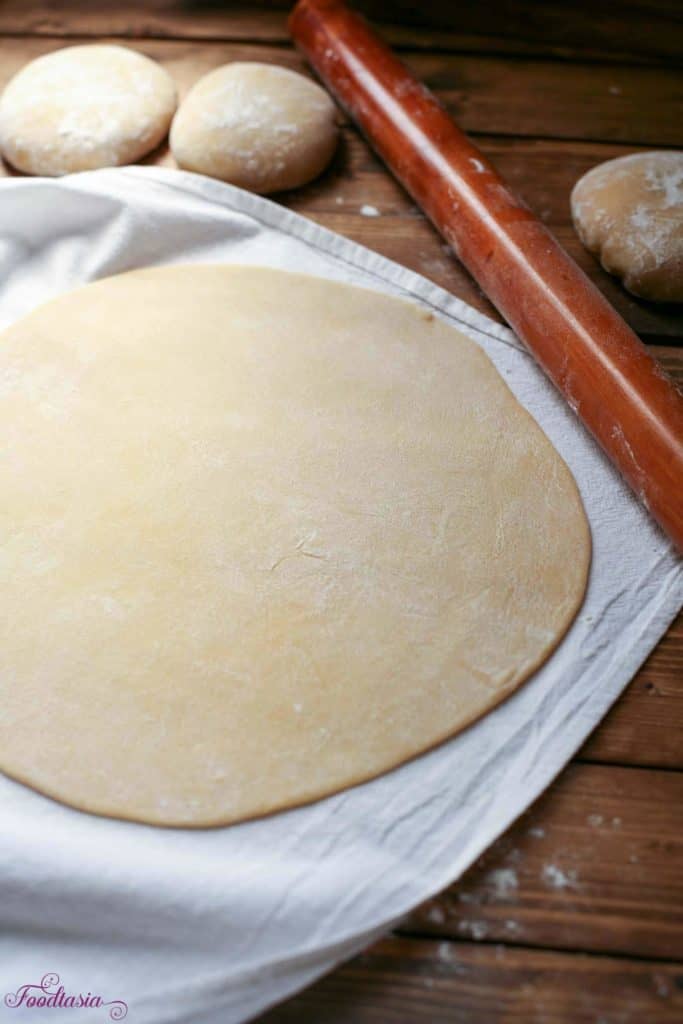
📝 Ingredients:
- Cabbage
- Onions
- Butter
- Flour
- Eggs
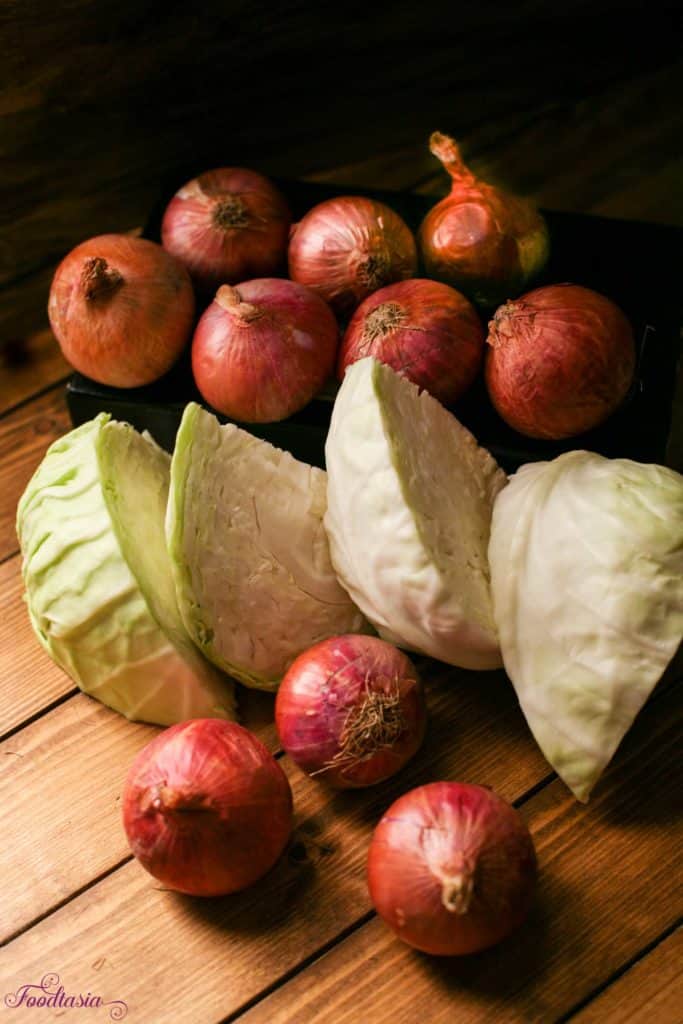
👩🏻🍳How to make Hungarian Cabbage and Noodles
To make the noodles:
In a stand mixer fitted with a dough hook, combine the flour, eggs, and salt. Knead by machine for 10 minutes until a smooth dough is formed. It should not be sticky or too dry. Add a small amount of flour or water as necessary to form a smooth dough.
Remove dough from machine and knead several times on the counter. Cover the dough in plastic and let rest for 20 minutes. Divide the dough into 4 equal pieces.
Roll out each piece on a floured surface, dusting the dough generously with flour, into a circle approximately 12 inches in diameter and about 1/16 of an inch thick.
Let the rolled-out dough rest on a floured surface for several hours until it is dry but still pliable.
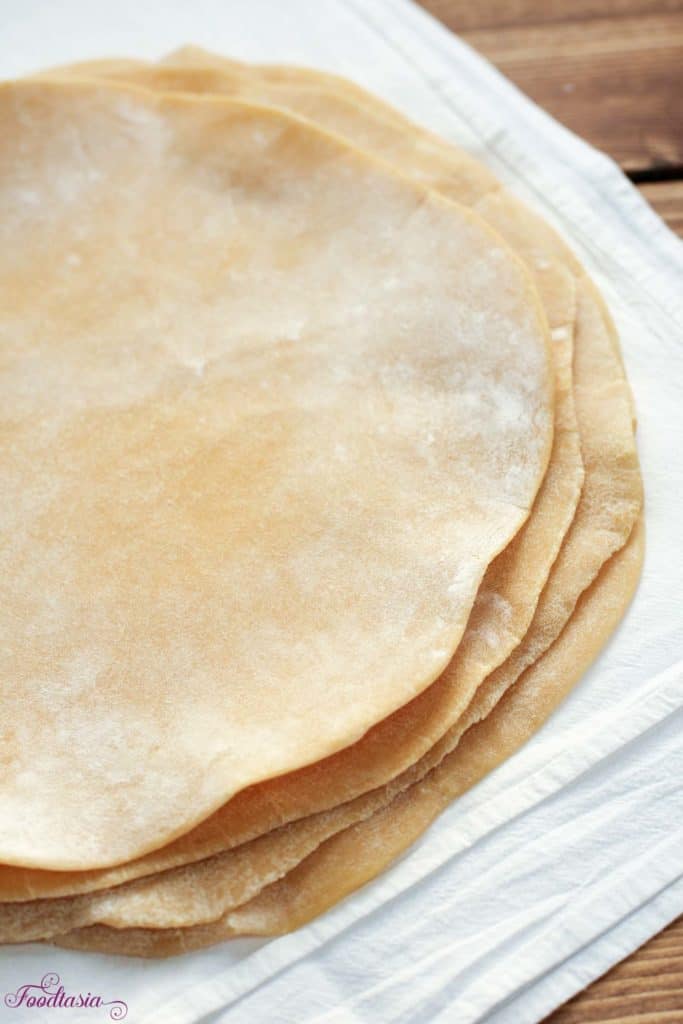
When the dough has dried, stack the circles of dough on top of each other and cut into 1-inch squares.
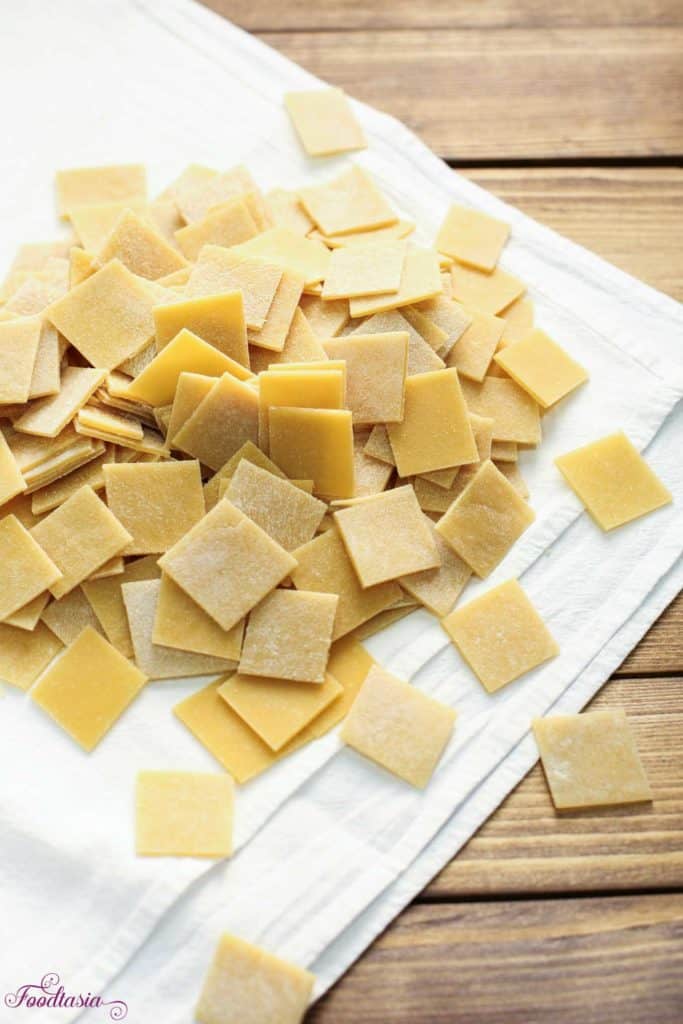
To make the cabbage and onions:
I make the cabbage and onions in different pans so they’re both perfectly caramelized. They’re both thinly sliced then sautéed until golden brown.
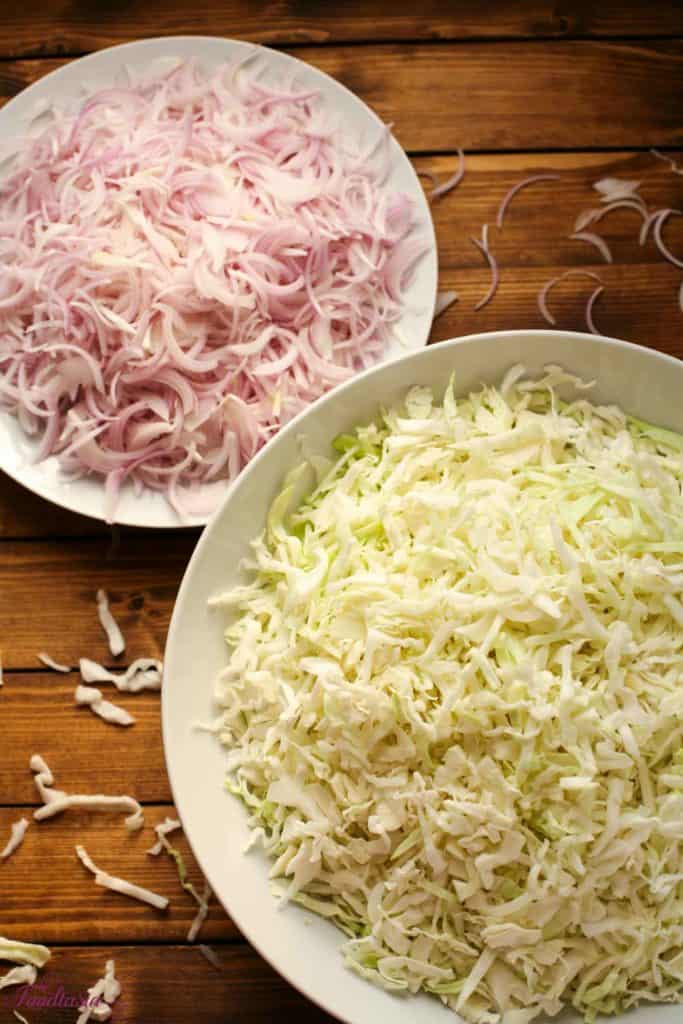
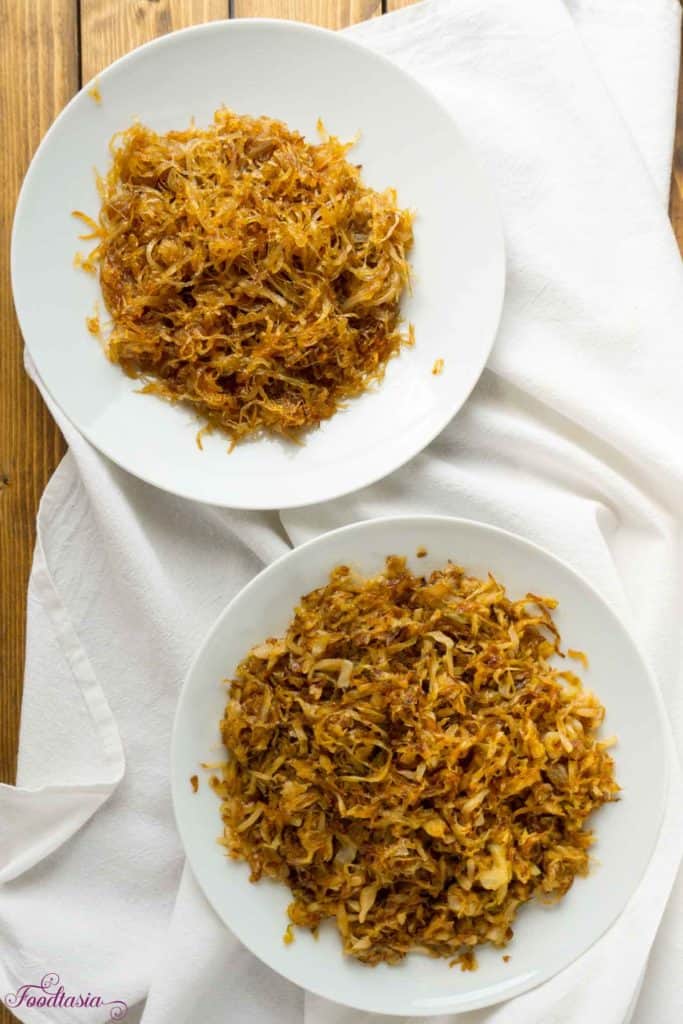
To finish the dish:
Combine the caramelized cabbage and onions. Add cooked drained pasta with a ladle or two of the pasta water to thin the cabbage and onions and help them adhere to the pasta.
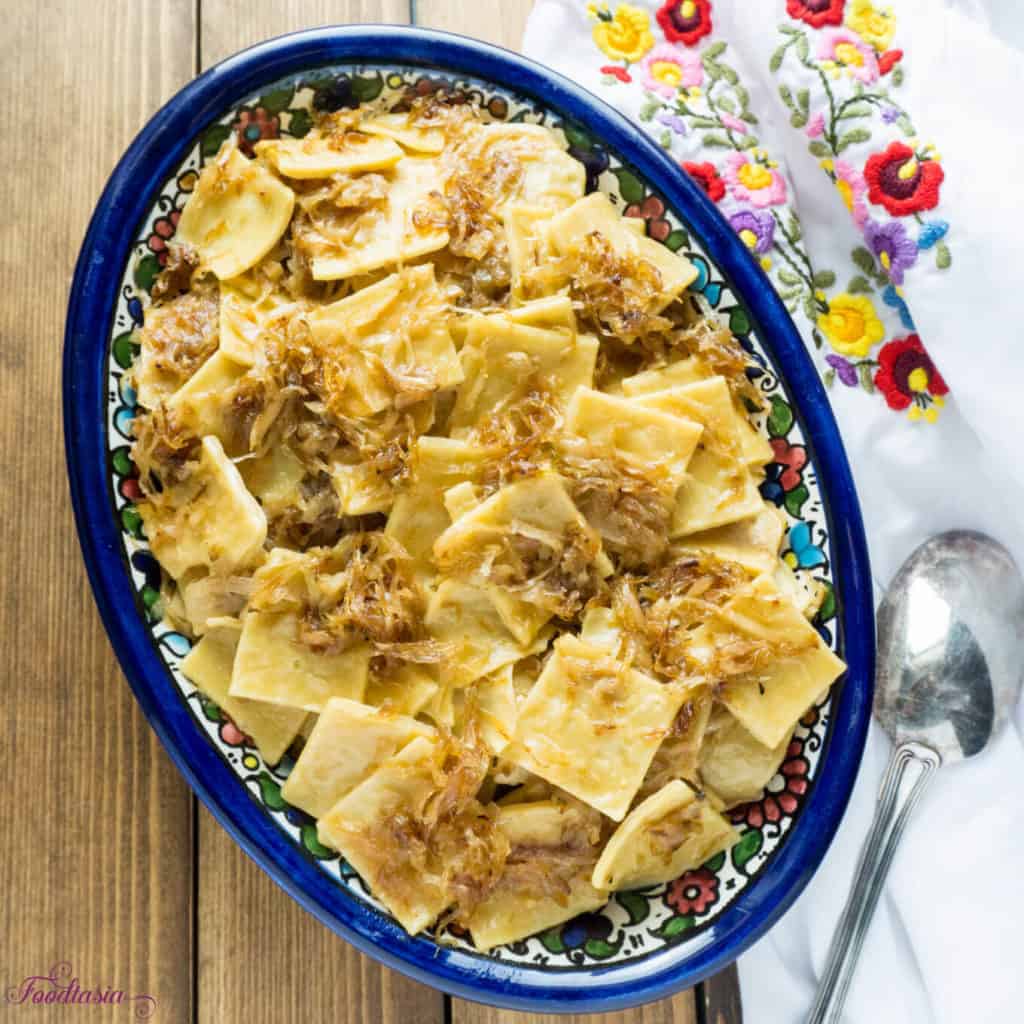
Tips for success
Knead the dough well - Grandma's biggest tip for a successful noodle was kneading. The more kneading, the better the noodle. I have found this to be true. If I am in a hurry, I make the dough in the food processor and the noodles turn out just fine. When I take the time to make them in a stand mixer and give them a good 10-minute kneading with the dough hook, they turn out with a smoother texture.
Dry the dough before cutting into squares. It should be dry enough that the pieces won't stick together when they're cut, but not so dry that when you cut the noodles, the dough breaks.
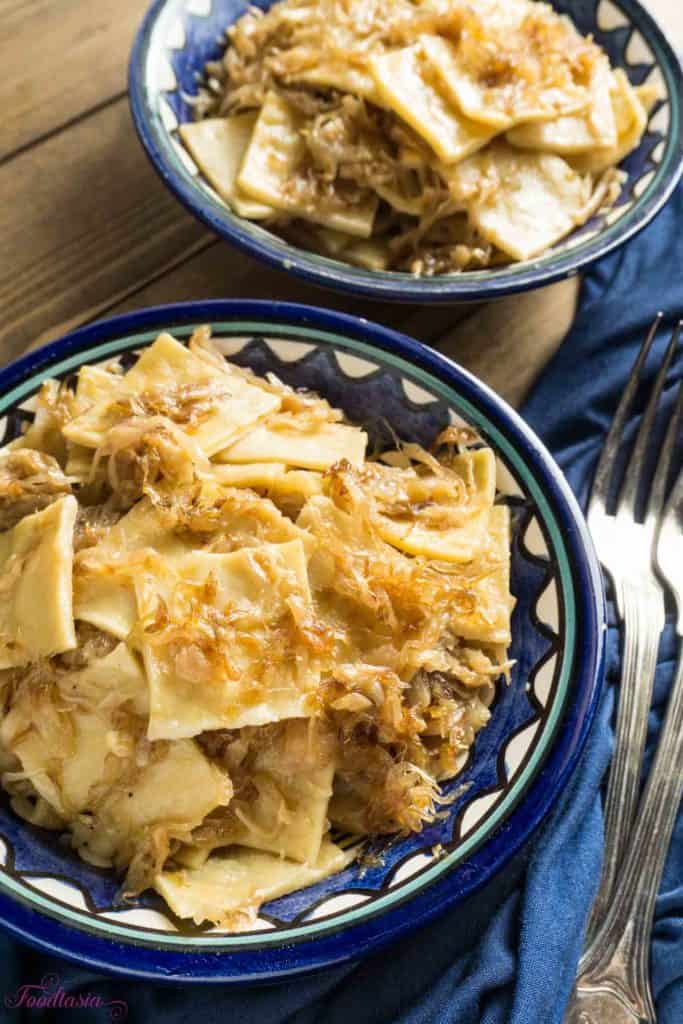
Recipe
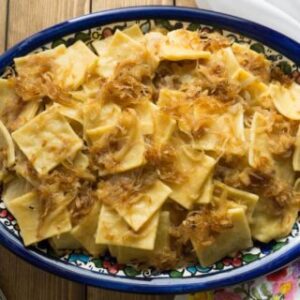
Hungarian Cabbage Noodles with Caramelized Cabbage and Onions - Káposztás Tészta
Ingredients
For the Noodles
- 3 cups all purpose flour
- 6 large eggs
- 1 teaspoon salt
For the cabbage and onions
- 1 small head cabbage about 3 pounds
- 1 - 2 pounds onion see note
- 1 ¾ sticks butter
- Salt and pepper
Instructions
For the Noodles
- In a stand mixer fitted with a dough hook, combine the flour, eggs, and salt.
- Knead by machine for 10 minutes until a smooth dough is formed. It should not be sticky or too dry.
- Add a small amount of flour or water as necessary to form a smooth dough.
- Remove dough from machine and knead several times on the counter.
- Cover the dough in plastic and let rest for 20 minutes.
- Divide the dough into 4 equal pieces.
- Roll out each piece on a floured surface, dusting the dough generously with flour, into a circle approximately 12 inches in diameter and about 1/16 of an inch thick.
- Let the rolled out dough rest on a floured surface for several hours until it is dry but still pliable.
- When the dough has dried, stack the circles of dough on top of each other and cut into 1 inch squares.
- When the cabbage and onions are finished, cook the pasta squares in boiling, salted water until tender but still al dente, about 10 minutes.
- Drain the pasta squares, reserving some of the cooking liquid. Combine with the cabbage and onion mixture, adding a little reserved pasta water if necessary.
- Add salt and pepper to taste.
- Combine thoroughly and serve.
For the cabbage
- Slice the cabbage in half.
- Cut each half of cabbage into three wedges.
- Remove the core.
- Thinly slice the cabbage.
- Melt 1 stick of butter in a large pan.
- Add the cabbage and 1 teaspoon salt.
- Cook, covered, on high for a few minutes. Then reduce the heat to medium low and cook, stirring often, until cabbage is golden brown.
For the onions
- Cut the onions in half and thinly slice.
- Melt 6 Tablespoons of butter in a large pan.
- Add the onions.
- Cook, covered, on high for a few minutes. Then reduce the heat to medium low and cook, stirring often, until onions are golden brown.
To finish
- Combine the carmelized cabbage and onions. Add cooked drained pasta and combine. Add a ladle or two of the pasta water to thin the cabbage and onions and help them adhere to the pasta.
- Add salt and pepper to taste.
Notes
- The amount of onion is up to your personal taste. Some cooks use onions, and some don't. Many cooks will use one large onion per head of cabbage. I like the rich flavor that caramelized onions bring to the dish, so I use up to 2 pounds of onions for a 3 pound cabbage.
- You can substitute 16oz of egg noodles for the homemade noodles.
Nutrition

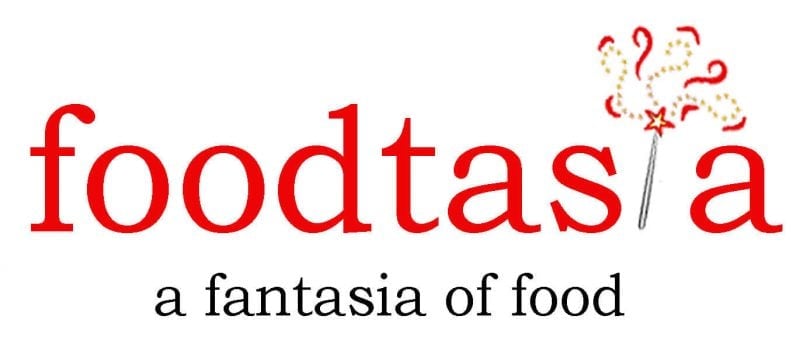

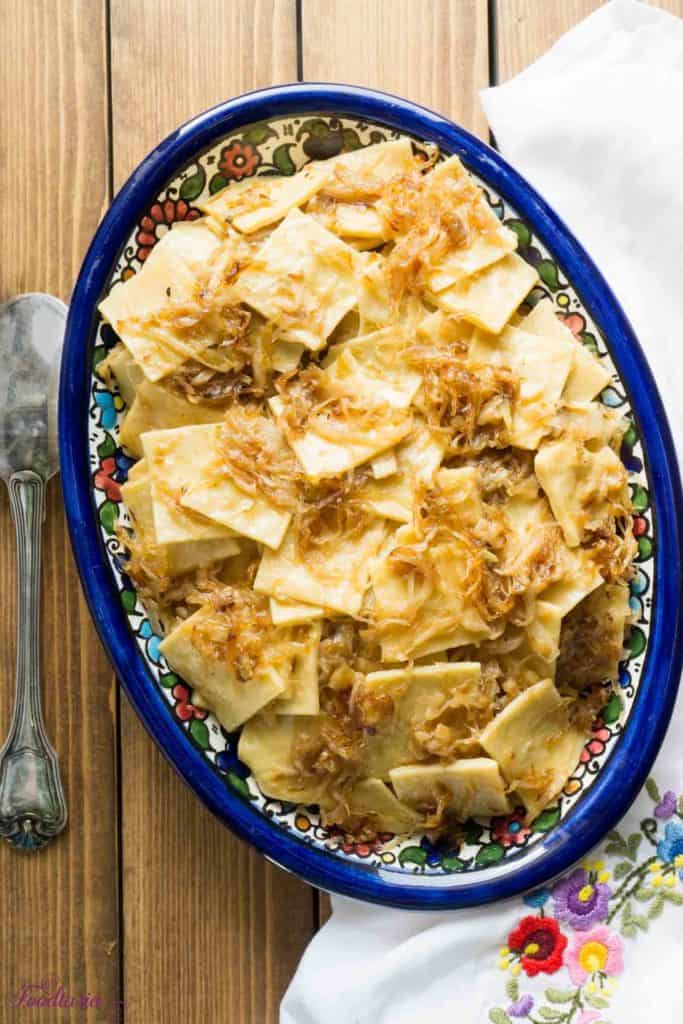
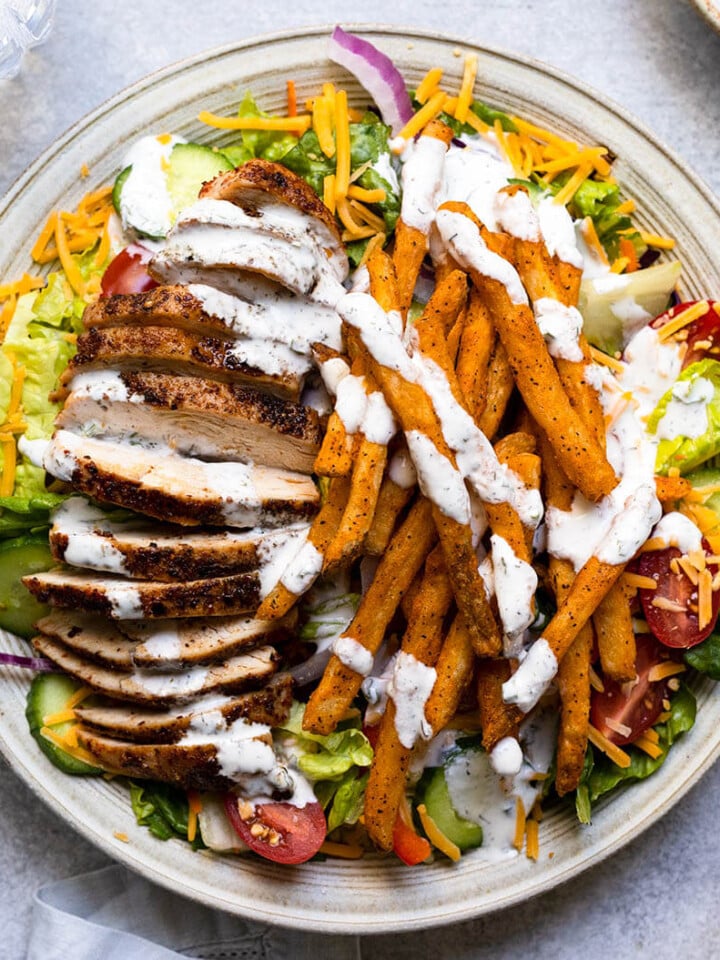

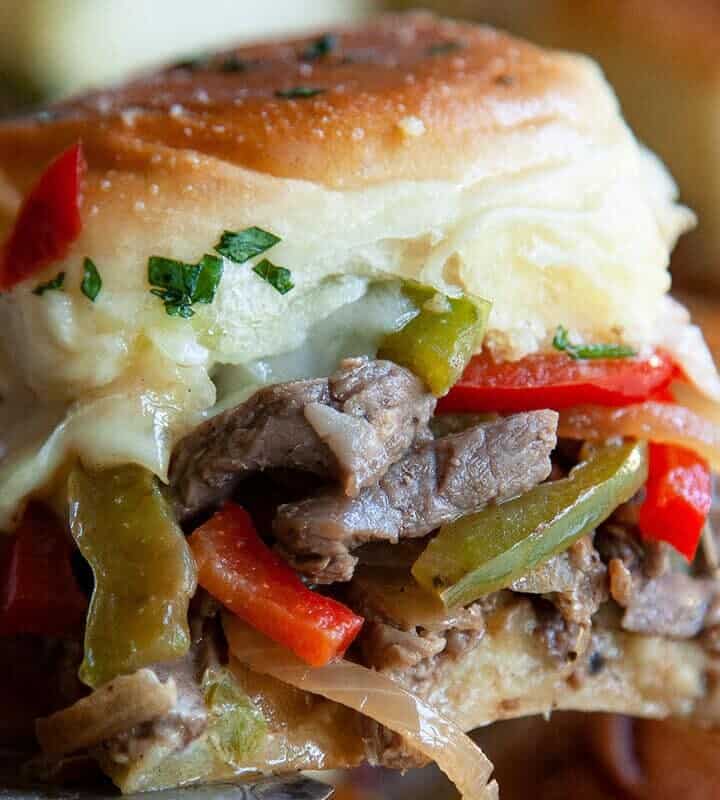
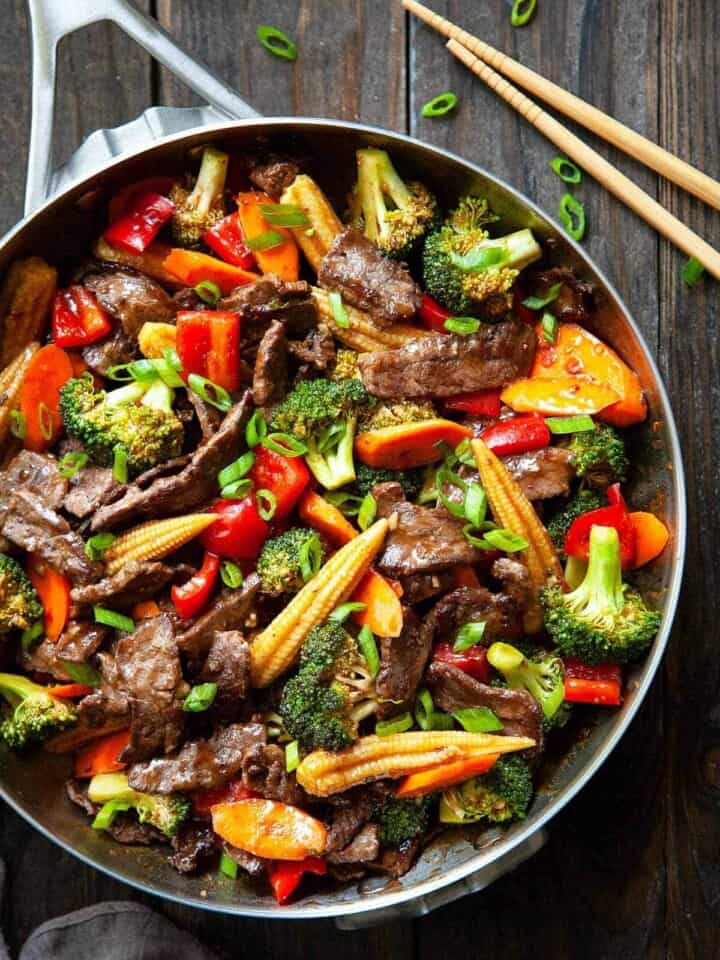
Julie Gara
Hi there, I was born in Budapest, and so were my parents and grandma Clara. So I am very familiar with how this recipe should taste like. And yours was terrific! My granny was a practical, busy woman, so she used already made bowtie noodles. But she made her cabbage and onions just like you did. At first I wondered why you were frying up the onions separately from the cabbage. But once I tried it, just as in the recipe, I realized why. It took the cabbage much longer to caramelize than the onions. Although don't believe my grandma used garlic, I followed your recipe...and everything was delicious. I did add 2 ingredients though...because my grandma always made every vegetable recipe a little sweet, I added a package of artificial sweetener, and a little vinegar to taste. Thank you for the recipe. I am so enjoying it.
Kelly
So happy you liked it, Julie! I'll try it with the sweetener and vinegar!
Anonymous
Lola
Delicious! We added kielbasa. OMG over the top.
Thanks for sharing.
Kelly
That sounds fabulous, Lola! Thank you!
Andrea
Hi Kelly. Káposztás csusza. Your granny was right. Csusza (choo saa) is the name of these square shaped noodles. People can say I'm gonna make some csusza tészta. 🙂
We never put onion in it just kaposzta and use pork lard instead of butter. Just original Hungarian-made please 🙂 I do not like with sugar just salty with ground pepper. But as we say in Hungary As many houses, so many customs. Means as many household as many versions.Good luck and it was heartwarming reading your recipe. 🙂 Sll the best
Kelly
Wow, thanks Andrea, for answering that question I've been wondering about for so long! As my grandfather was Hungarian and my grandmother was English/Scots/Irish, I didn't know if she made up her own word for it or not. So nice to finally know!
Theresa
Kelly, I’ve been making this dish for many years. Now my grandsons love it as well & I've taught them oldest (13) how to make it. My grandmother was Hungarian & died when I was eleven.
I’ve always used packaged noodles & wanted to try to make my own with gluten free flour. They came out fantastic! I used ‘Cuc4Cup’ brand.
I also still make her ‘Knuckle’ soup. I’m not sure, She may have been saying a work meaning noodle because there were NO knuckles involved! . It was a chicken broth with dumplings made with butter, egg & farina. To this day, I can’t recuperate from a cold without a bowl or two.
Do you have a strudel recipe? I remember her technique, but no one wrote down the recipe for the dough. Thanks so much for the noodle recipe & instructions!
Kelly
Such a wonderful tradition to pass down to your grandsons, Theresa! My grandmother also had funny names for things, but I didn't think to ask about it while I had the chance. I don't have a recipe for strudel, my grandmother was more of a pie baker. What I've seen of rolling out the strudel dough was pretty fascinating. Thanks so much for your comment! xo
Lola
Absolutely delicious! It takes a while to caramelize the onions but if your patient it pays off with extraordinary flavors in the end. We served with grilled bratwurst. Thanks for sharing . This is now added to my comfort food list.
Kelly
So happy you liked it, Lola! It's definitely comfort food! Thanks so much!
Deborah Quitt
Favourite dish in the whole world!!
My grandmother from Hungary would cook this for me when I was growing up.
Kelly
Aw, so happy you liked it, Deborah! It's definitely a favorite with my family as well! Thanks so much!
Brian
This was awesome!!!!
We gobbled it down and were more more more!!
Kelly
So happy you liked it, Brian! Thanks so much!